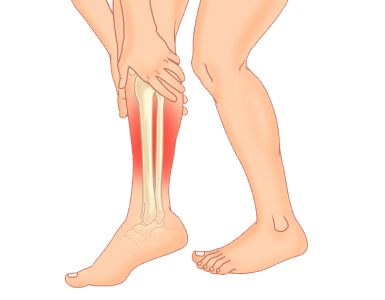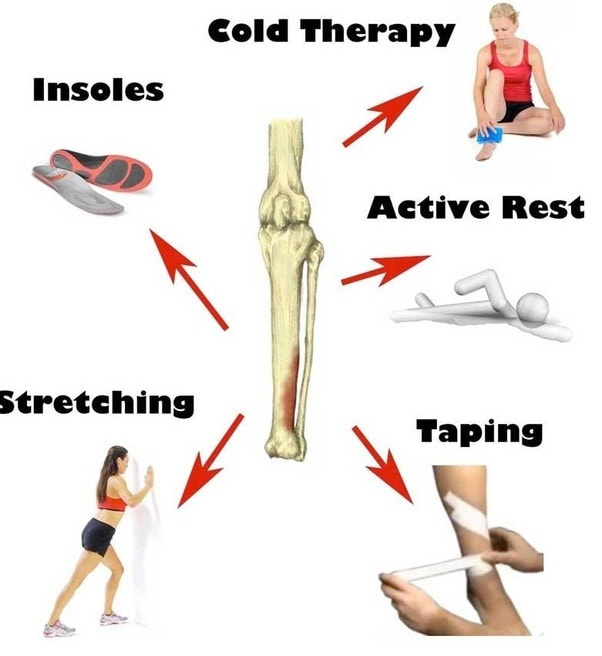- They commonly develop in runners or in athletes in sports with lots of hopping or jumping.
- They can be caused from the muscles in the front of the shin or the deep muscles of the calf
What can contribute to shin splints?Usually many factors! These include:
- Tight calf muscles
- Weakness of calf muscles
- Increased training loads
- Inappropriate footwear
- Flat feet
- Poor running technique
- Poor stability in hip and knee

When do i usually feel symptoms?
– Shin splints typically develop in the bottom third of the tibia, where the bone is the narrowest and most vulnerable to repetitive stress and loading.
– Initially, the shin will be sore to touch after running.
– If the shin bone continues to be overloaded, the pain will begin at the start of the run.
– Eventually, if left untreated, the shin bone will feel sore before, during and after running, and a stress fracture may develop.
Physio Fixes for Shin Splints- De-loading the bone by resting from painful activities
- Addressing contributing factors – this may involve strengthening, stretching, orthotics or more, as guided by your physiotherapist
- Gradual, individualised return to running program

‘Shin Splints’ is an umbrella term that includes a variety of pathologies impacting the region of the shin bone (tibia).
sarah.jarratt2019-10-12T12:57:16+00:00
